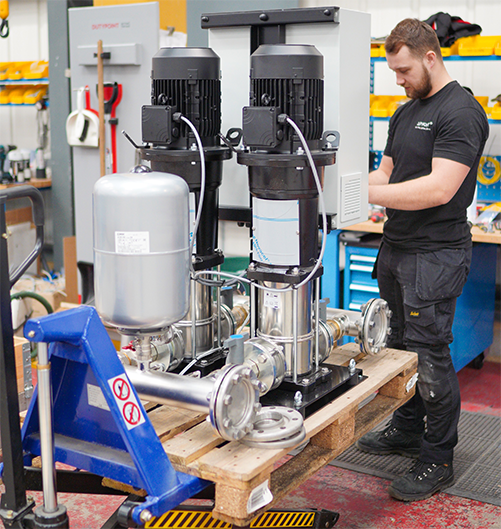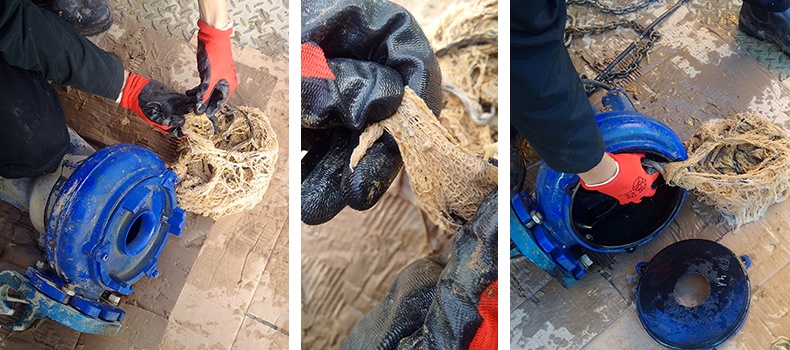Table of contents
- What is Phosphorus
- What Causes High Phosphorus Levels in Water?
- Phosphorus Regulations in the UK
- Wastewater and Phosphorus
- Why is it Important to Remove Phosphorus from Wastewater?
- How to remove Phosphorus from Wastewater with Dutypoint
What is Phosphorus?
Phosphorus is a naturally occurring mineral found in phosphate rock. Phosphorus is also an essential building block found in animal and plant cells. Because phosphorus is an essential nutrient, it is widely used in animal feed and fertilisers. As phosphorus is water soluble, large quantities can enter drinking water, rivers, groundwater aquifers and reservoirs. High phosphorus levels can promote the growth of toxic algae blooms. These algae blooms can reduce oxygen levels and release harmful toxins into the waterways that supply our drinking water.
What Causes High Phosphorus Levels in Water?
There are many sources of phosphorus in aquatic systems. Some of these sources are naturally occurring, such as waterfowl waste, atmospheric decomposition, weathering of geologic phosphate material, and plant life. However, most phosphorus contamination results from human activities, including fertiliser disposal, agricultural and urban run-off, industrial and domestic sewage, or faulty or overloaded septic systems.
The UK imports around 174,000 tonnes of phosphorus annually, with 74,000 tonnes used in farming and household commodities. Of all the man-made sources of phosphorus, sewage and water treatment plants are responsible for the most significant portion of phosphorus contamination. Sewage and water treatment plants are estimated to be responsible for between 60 and 80% of phosphorus found in the UK river water.
The UK Environmental Agency source apportionment modelled analysis suggests the percentages of where phosphate loads originate from, using two distinct catchment areas (Whitney on Wye) and (Monmouth) to track phosphorus sources. This is outlined in the table below.
| Model Results | Whitney on Wye | Monmouth |
|---|---|---|
| Approximate phosphate carried | 67 kg/day | 195 kg/day |
| Effluent from sewage treatment works | 23% | 21% |
| Rural land use | 72% | 74% |
| Storm overflow | 2% | Less than 1% |
| Other sources (e.g., septic tanks and urban run-off) | 3% | 5% |
Phosphorus Regulations in the UK
The challenge of managing phosphorus has increased over recent decades due to population growth and increased demands on waterway infrastructure. Therefore, the need to dispose of phosphorus safely has also risen, in order to avoid damaging the natural environment or our health.
The UK Government estimates that sewage treatment plants are responsible for between 60 and 80% of river phosphorus. Water and wastewater companies have a legal duty to comply with relevant legislation. The current nutrient pollution standard is 0.25 mg/l for phosphorus levels. However, this is expected to be upgraded by April 1st, 2030, to meet nutrient neutrality standards. The goal is to achieve an average 75% reduction in the phosphorus loads of wastewater treatment works across affected catchments.
Wastewater and Phosphorus
The root cause of the high phosphorus levels in wastewater is inefficient wastewater management. Influent wastewater contains high concentrations of phosphorus. There are several reasons for this, including biological waste, industrial and trade effluents, such as industrial smoke, liquid factory waste, and synthetic detergents.
Why is it Important to Remove Phosphorus from Wastewater?
Removing phosphorus from wastewater is essential to ensure the health and safety of the public and protect the environment. When excessive quantities of phosphorus enters rivers and reservoirs, it can promote the growth of dangerous algae blooms. This can have a devastating effect on marine life, destroying ecosystems. Furthermore, these algae booms release harmful algal toxins into the water, which pose a significant health risk to humans.
Therefore, excess phosphorus should be removed before the wastewater is discharged into local streams and rivers (where it may flow downstream to drinking water plants). It is crucial that phosphorus is sufficiently removed from wastewater to protect marine biodiversity and prevent potential toxic effects on human health.
How to remove Phosphorus from Wastewater with Dutypoint
Wastewater phosphorus removal can be achieved through chemical or biological means, or a combination of both. We have outlined these various methods in our article: How to Remove Phosphorus in Wastewater.
When selecting equipment for wastewater management, several important factors must be considered, including compliance with relative authorities and product selection.
At Dutypoint, we aim to provide a relevant and effective solution for your project; whether your wastewater treatment facility requires a basic wash-down package in a QuadraTANK™ unit or a complex bespoke system design and installation, our experts can assist you.
Should you need assistance finding a suitable or bespoke phosphorus removal solution for your facility, do not hesitate to contact a member of our specialist team today. Alternatively, download our Big Amber Book to learn about our extensive range of wastewater pump systems.




 Duncan Lewis
Duncan Lewis  16 July 2024
16 July 2024 






